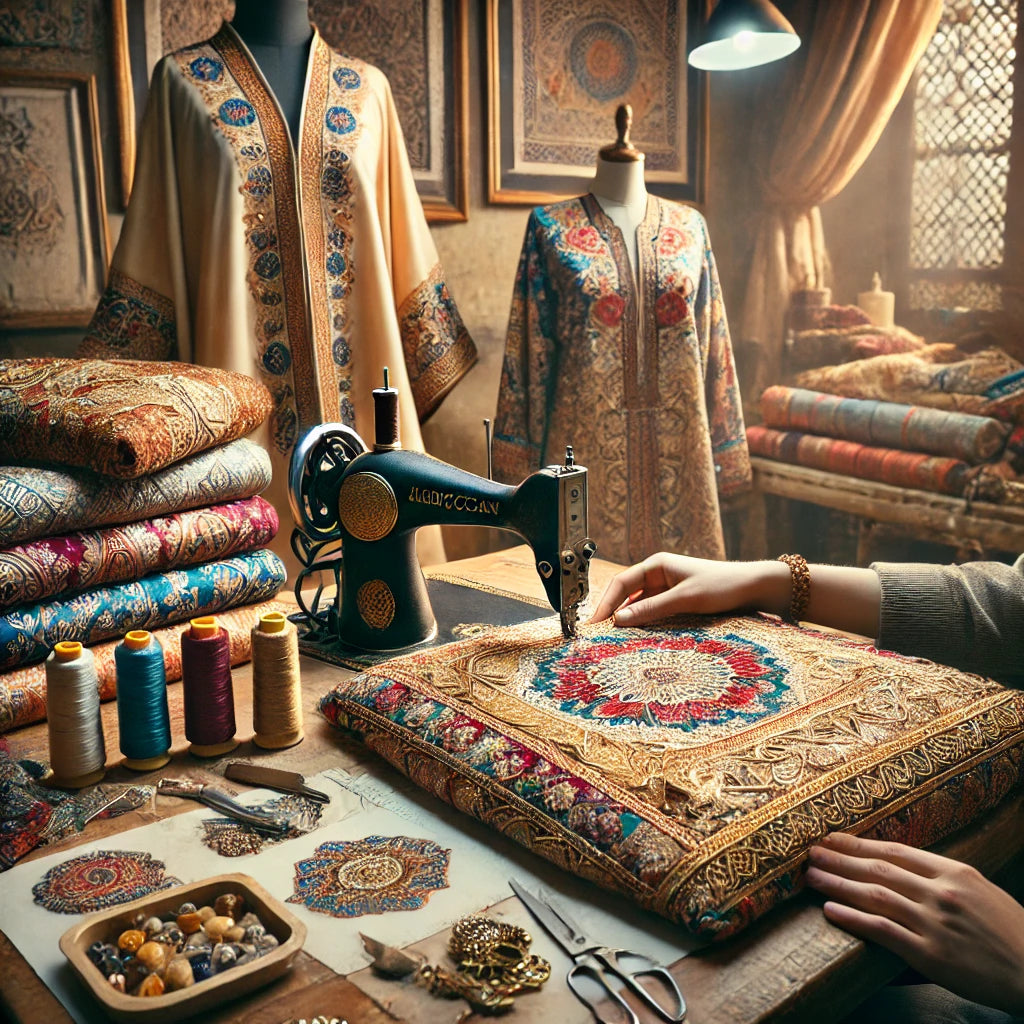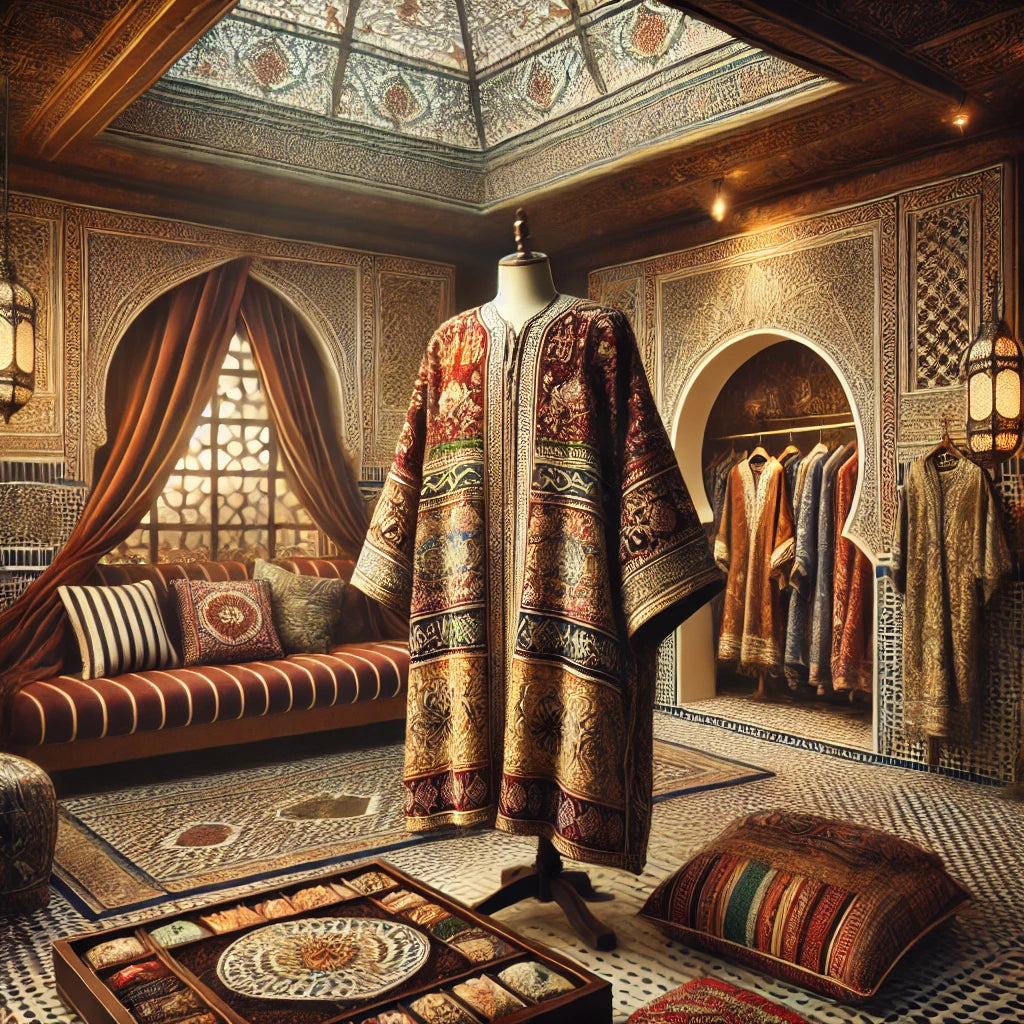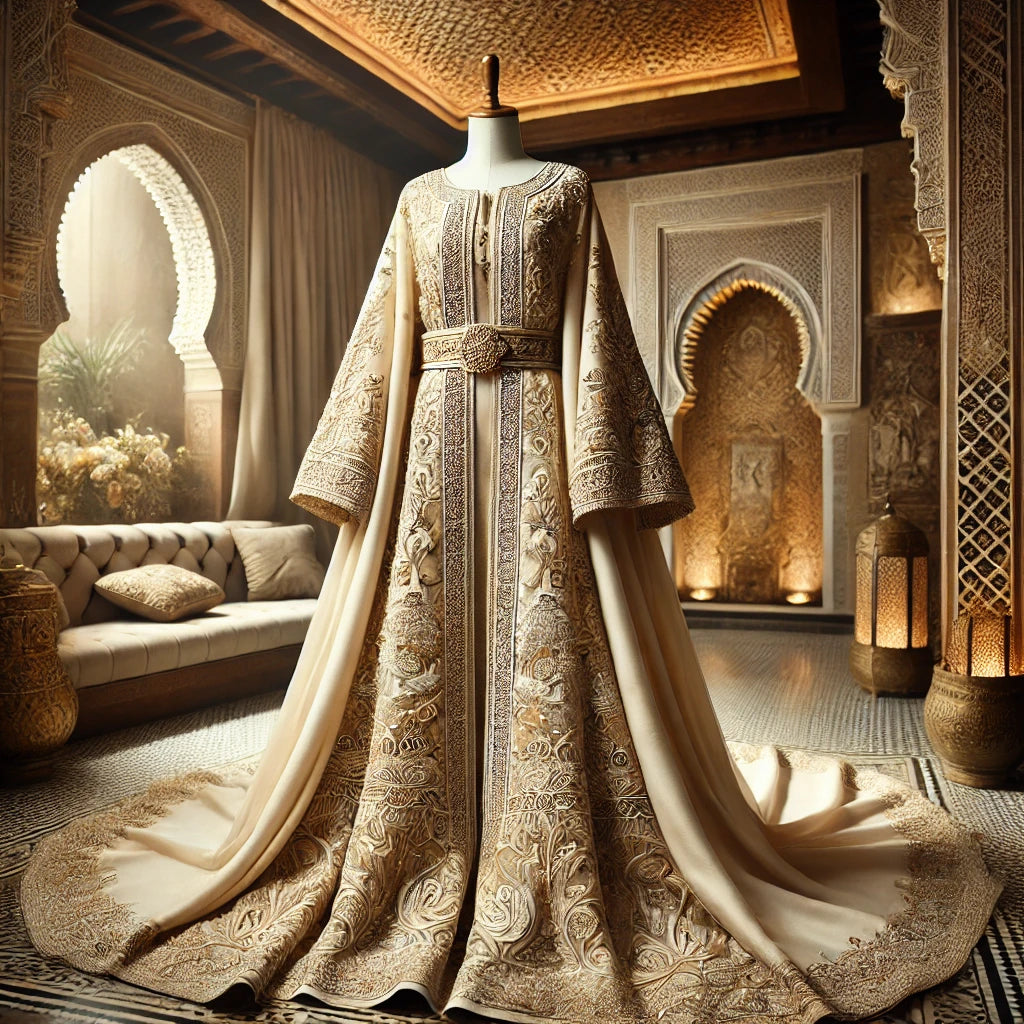
How to make a caftan
The caftan, this iconic garment of Moroccan elegance, fascinates as much for its beauty as for its history. For centuries, it has symbolized the craftsmanship and cultural richness of Morocco. Have you ever wondered how to make a caftan ? Creating one requires careful attention to detail and respect for traditional techniques. Whether you're a passionate fashion enthusiast or simply want to understand the steps involved, this article will explain everything you need to know to design a unique caftan that's both modern and true to its origins.
The Moroccan caftan is more than just a garment; it's a work of art that requires patience, skill, and creativity. Every detail counts, from the fabrics to the embroidery and finishing touches. And if you're looking for inspiration or want to discover ready-made designs, visit our "Moroccan Caftan" collection .
I. Essential materials and tools for making a caftan
When starting to make a caftan, the first step is to select the right materials. Each element plays a crucial role in the final appearance of the garment. The quality of the fabrics, the embroidery threads, and even accessories like belts are all important.
1. Choose the perfect fabric
The choice of fabric is essential when creating a caftan. Traditionally, luxurious fabrics such as silk, satin, or velvet are used for their noble appearance and comfort. For a more modern or everyday version, linen or cotton can be considered.
Explore our " Moroccan Caftan " collection to discover caftans in a variety of refined fabrics.
2. Necessary sewing tools
A good quality sewing machine, scissors, special needles for delicate fabrics, and a tape measure are essential for creating a caftan. Precision is key, especially when creating the embroidery that will adorn the garment.
Find inspiration in our “ Moroccan Caftan ” collection .
3. The importance of embroidery and ornaments
Embroidery adds a unique touch to each caftan. Using gold or silver thread is a tradition that gives the garment its full brilliance. Patterns can be varied according to taste, whether floral, geometric, or abstract.
Discover our embroidered models in the “ Moroccan Caftan ” collection .
II. The stages of designing a caftan
Once the materials are gathered, it's time to move on to designing the caftan. Each step of the creation requires rigor and creativity to achieve a caftan that lives up to expectations.
1. Measurement and patronage
Before you begin cutting the fabric, it's crucial to take the correct measurements. The caftan must fit perfectly to ensure a smooth drape. Creating the pattern is an important step that will allow you to cut the fabric accurately.
Be inspired by our tailor-made creations in the “ Moroccan Caftan ” collection .
2. Cutting the fabric
Using the pattern as a guide, cutting the fabric is the step that really kicks off the manufacturing process. Care must be taken to avoid damaging the fabric, especially if you're using fine materials like silk or velvet.
Explore our " Moroccan Caftan " collection to see the results of these techniques on unique models.
3. Assembly and sewing
Sewing the various pieces of the caftan is a delicate step. It must be done with care to ensure a flawless finish. It is at this stage that the caftan takes shape, with its full sleeves and characteristic details.
Discover how these steps translate into our “ Moroccan Caftan ” collection .
III. Caftan embroidery and decoration techniques
Embroidery is the soul of the caftan. It's what sets it apart from other traditional garments and gives it its visual richness. Learning how to make a caftan requires mastering embroidery.
1. Traditional Moroccan embroidery
Fez stitch, for example, is an iconic technique used in Moroccan kaftan embroidery. This type of embroidery is characterized by floral motifs and sophisticated arabesques. Each kaftan thus becomes a unique piece of art.
Discover traditional embroidery in our “ Moroccan Caftan ” collection .
2. Adding pearls and rhinestones
For a more festive caftan, adding pearls or rhinestones is a popular option. These embellishments add a touch of glamour and sparkle, ideal for a wedding or ceremony. However, they should be added sparingly to avoid overwhelming the garment.
Browse our pearl-adorned models in the “ Moroccan Caftan ” collection .
3. Personalization: Create your own style
Once you've mastered the basic techniques, it's time to let your creativity run wild. The beauty of making a caftan lies in the ability to customize every detail, from the embroidery to the cut, to create a garment that's truly yours.
Create your own style with our " Moroccan Caftan " collection



Leave a comment
This site is protected by hCaptcha and the hCaptcha Privacy Policy and Terms of Service apply.